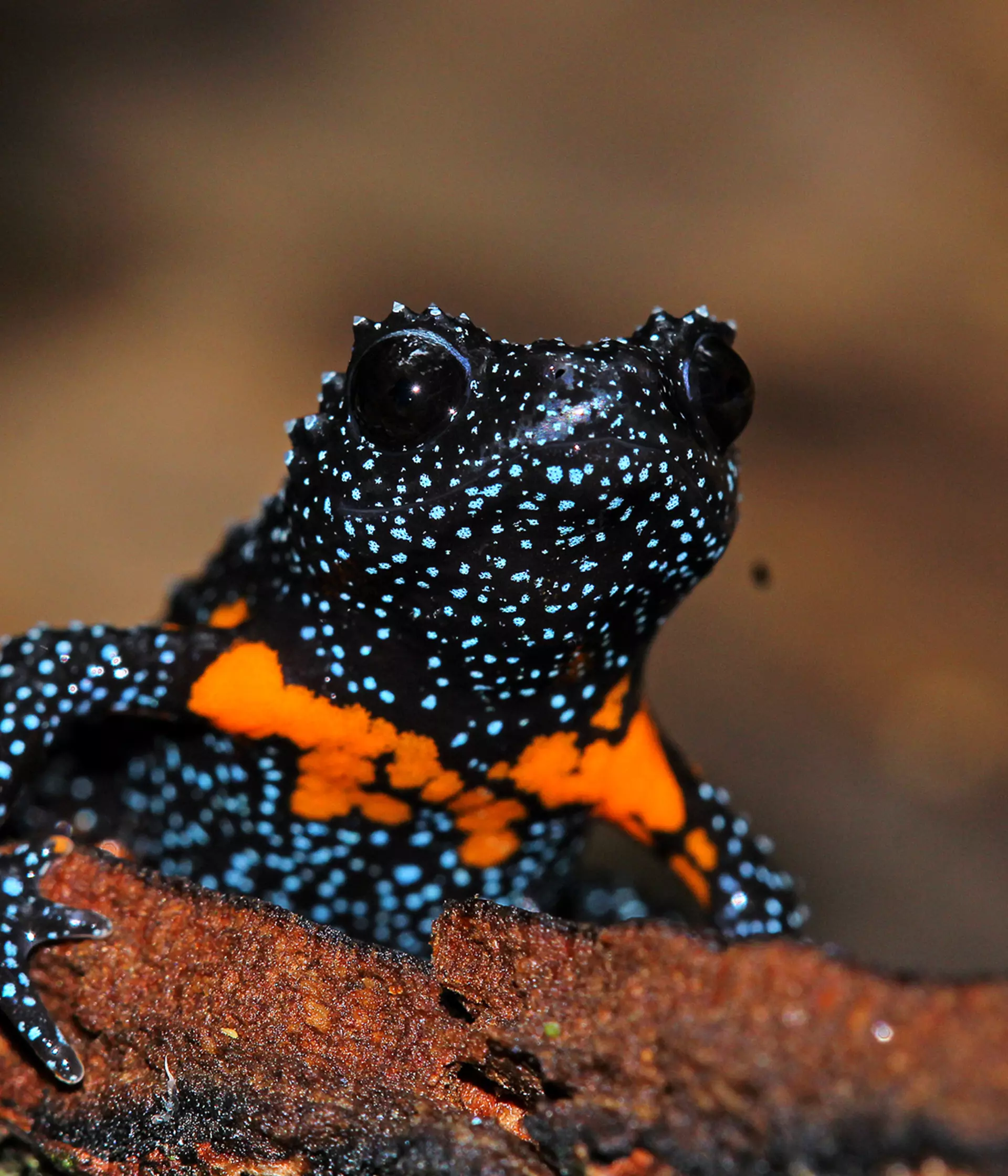Experts have outlined a roadmap to save 102 billion years of endangered evolutionary history - marking the world’s first study of how future extinctions could forever change the vertebrate Tree of Life.
Published in Nature Communications the ZSL-led study underscores the peril faced by jawed vertebrates (mammals, birds, amphibians, reptiles and the majority of fish species), with 102 billion years' worth of evolution currently at risk of being lost forever. However, through their investigation, the researchers have identified the species – such as hammerhead sharks, galaxy frogs and western swamp turtles – whose conservation would maximise the amount of evolutionary history being safeguarded, providing a clear roadmap for conservationists and policymakers to take crucial action and protect global biodiversity.
Dr Rikki Gumbs, lead author of the ambitious study said: “Life first appeared on Earth around four billion years ago, and since then it’s branched out and evolved to produce a whole array of incredible animals that we share the planet with. Now, many of those species are at risk as a changing climate, habitat loss, disease and overexploitation make it increasingly hard for them to survive – but we don’t have to sit by and let this happen. People across the globe are working together to protect wildlife, and our findings will play a vital role in helping prioritise conservation action.”
By looking at the extinction risk of over 70,000 species and the amount of unique evolutionary history that they represent on the Tree of Life, the team were able to identify the species, where through conservation action, we can save the greatest amount of evolutionary history. Representing some of the most extraordinary and unique animals found on Earth, these animals are known as EDGE species (Evolutionarily Distinct and Globally Endangered).
Rikki explained: “102 billion years is an incomprehensively large amount of time – the universe itself is only around 14 billion years old. But the Tree of Life is so wide and varied that it all adds up once you start combining all the evolution that has happened concurrently during our planet’s history. It really highlights just how vast yet precious life on Earth is – and that once we lose a species, it’s gone for good. Eons lost in the blink of an eye.”
Which species are most in need of conservation action?
The researchers flagged turtles, tortoises and fish as the groups most in need of conservation action. 14 of the 25 species identified as holding the greatest amount of evolutionary history are fish. Meanwhile, 16% of the top 25 were turtles and tortoises, despite this group only making up 0.5% of jawed all vertebrates – highlighting that they are disproportionately threatened by extinction while also possessing high levels of evolutionary history.
The work builds upon previous work from the team, for the first time incorporating fish – a group that makes up over 40% of all vertebrate species.
Rikki added: “This is our first look at how extinction is threatening to erode biodiversity across the entire group of jawed vertebrates, and it’s allowed us to fill in huge gaps in our understanding. It’s also revealed an important trend; over the past decade, species that are the sole representatives of entire vertebrate families, custodians of deep branches of the Tree of Life– such as pig-nosed turtles and the long-legged, snake-hunting secretary birds – were more likely to be threatened with extinction than your average vertebrate. By identifying these species now, we can act sooner to protect them.”
What action is being taken to protect vulnerable species?
Conservation action is already taking place to protect many of these species, and the team behind the paper hope this roadmap will help further efforts. The researchers identified four species that are already seeing an increase in numbers; Critically Endangered gharials, Round Island boas - which in 2018 were downlisted from Endangered to Vulnerable on the IUCN Red List – crocodile sharks and fish-eating ospreys.
The roadmap provides vital guidance for decision-makers working towards global biodiversity goals. The UN's Global Biodiversity Framework commits countries targets to halt and reverse biodiversity loss by 2030 – countries currently have an October deadline to show how they will meet these goals, and work to prevent further extinctions is central to achieving the Framework’s aims. This research provides a first baseline for vertebrates for two indicators to track our progress towards these 2030 targets.
How does ZSL protect EDGE species?
We work with numerous EDGE species across the globe, through its EDGE of Existence programme and other conservation projects. From thin-snouted, crocodile-like gharials in Nepal to Critically Endangered angelsharks across Europe and North Africa, we work with local communities to better understand and develop protection for these threatened species. The first long-term study of the star-speckled galaxy frog living across forested mountain ranges in India led to the creation of a blueprint to save this Vulnerable species, along with the adoption of the frog as the first flagship species for a protected area in the country. Meanwhile, our two conservation zoos, London and Whipsnade, partake in breeding programmes for several EDGE species including red pandas, big-headed turtles and Lake Oku clawed frogs.
Rikki added that this is just one part of the work needed to protect global biodiversity: “Vertebrates are thought to be only 1% of the species that live on this planet, but by taking a similar approach to invertebrates and plant life we can build a more complete framework to recover ecosystems and biodiversity across the world.”
